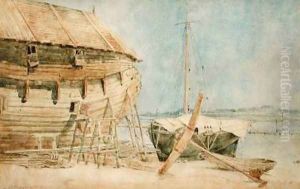Le Moyne Paintings
Jacques Le Moyne de Morgues, born in 1500 in Dieppe, France, was a French artist and explorer known for his detailed illustrations of the New World, particularly those documenting the French Huguenot colony at Fort Caroline in present-day Florida. His work provides a valuable historical record of the early encounters between European settlers and Native American peoples in the 16th century. Le Moyne's early life is not well-documented, but he is believed to have been trained as a cartographer and artist in his hometown of Dieppe, a center for explorers and mapmakers in France at the time.
In 1564, Le Moyne accompanied René Goulaine de Laudonnière on an expedition to establish Fort Caroline, and his role was to document the flora, fauna, and indigenous peoples of the region. However, the settlement faced immediate difficulties, including conflicts with local tribes and a lack of supplies. The situation worsened when the Spanish attacked and destroyed the colony in 1565, an event Le Moyne narrowly survived by escaping to England.
While in England, he found patronage under Sir Walter Raleigh, which allowed him to begin producing his most famous works: detailed illustrations of the Carolinian expedition and the natural history of Florida. These drawings are among the earliest visual records by a European of the North American continent and are considered invaluable for their ethnographic and biogeographical insights. His works were eventually published by Theodor de Bry in 1591, in a collection titled 'Brevis Narratio Eorum Quae in Florida Americae Provincia Gallis Acciderunt,' which significantly influenced European perceptions of the New World.
Le Moyne's illustrations are celebrated for their attention to detail and accuracy, providing insights into 16th-century Native American culture, plants, and animals. Despite the importance of his works, much about Le Moyne's life remains a mystery, including the exact date of his death, which is presumed to be around 1588. Today, his surviving works are held in high esteem by historians, art historians, and collectors, offering a rare and invaluable glimpse into the early period of European exploration and settlement in North America.
